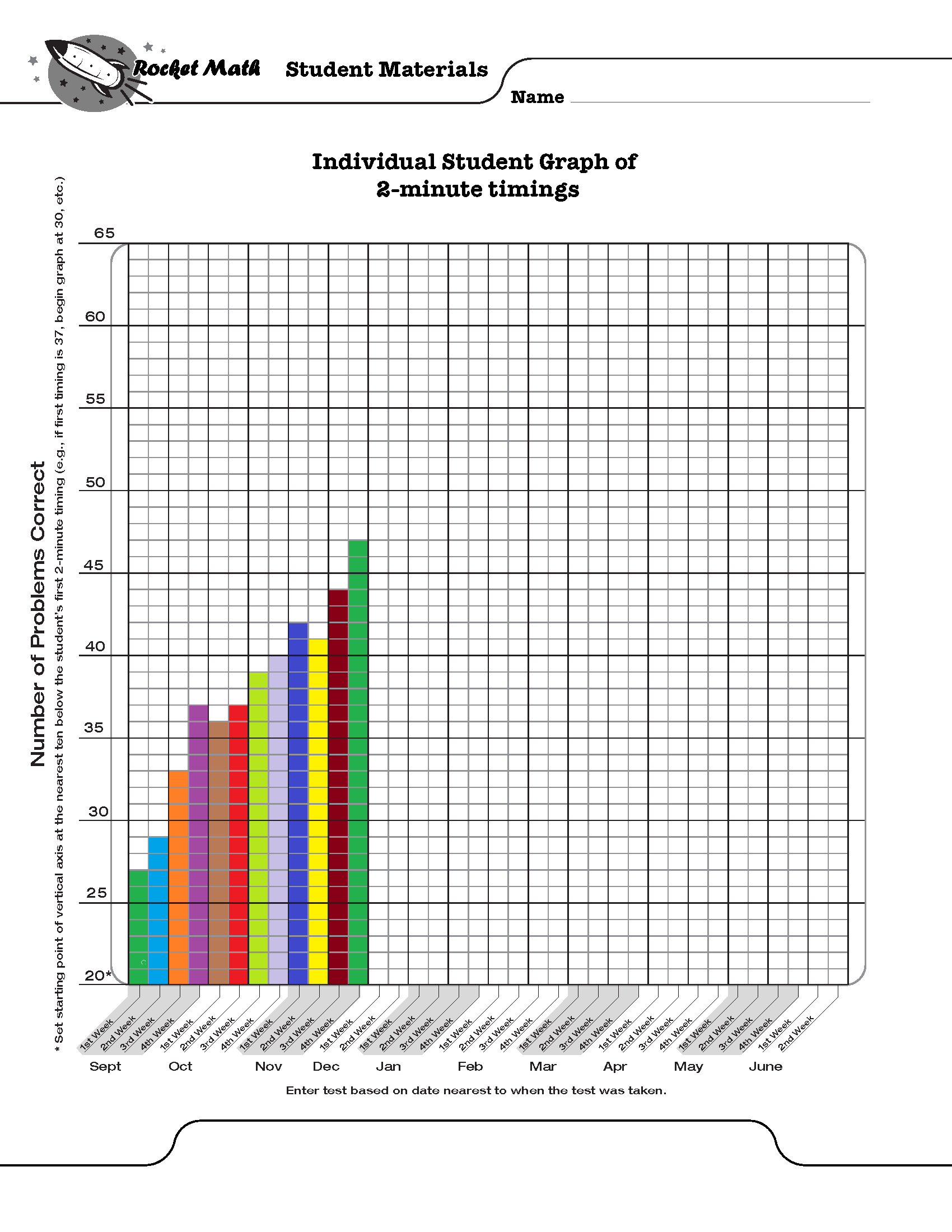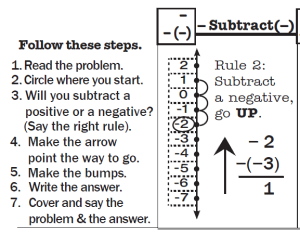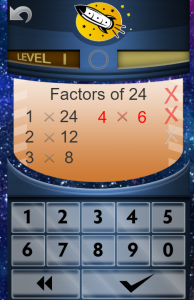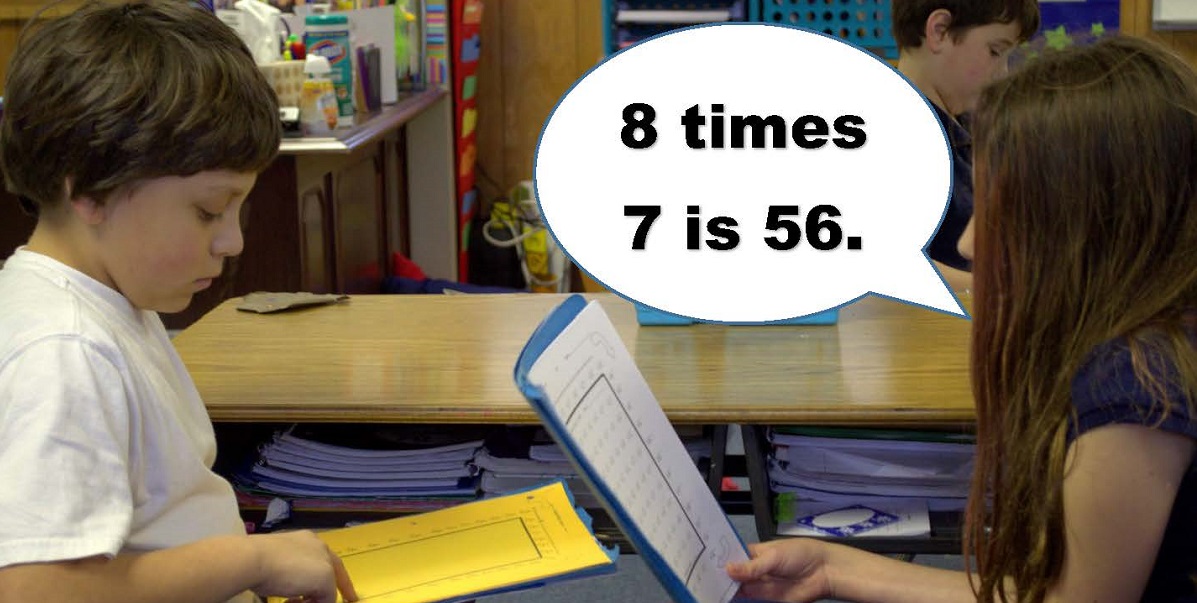Few teachers realize how similar spelling and math facts are.
Both spelling and math facts are tool skills. Tool skills are things which one needs to do academic work, tools you use to do other things. The tool skills of spelling and math facts (like decoding) need to become so automatic that students don’t have to think about them.
If students have to think up the answer to math facts, it makes doing computation harder. The process of figuring out a math fact distracts from the mathematics being done. Similarly, if you have to stop and think of the spelling of a word (like the boy pictured above) while you are trying to write, it distracts you from thinking about what you are trying to write. Students are more successful and better able to show what they know and better able to focus on learning when their tool skills have developed to the level of automaticity.
Daily practice develops automaticity. Developing automaticity with math facts and with spelling requires a lot of practice. Daily practice is best and a few minutes a day is optimal. That is why Rocket Math is designed the way it is–to provide that daily practice. So Dictating Sentences gives each member of the pair ten minutes a day of practice writing sentences composed of words they know how to spell.
Dictating Sentences is spelling with a twist. Instead of spelling one word at a time, in Dictating Sentences (now part of the Universal Level Rocket Math Worksheet Program) students are asked to write an entire sentence from memory. They work in pairs and their tutor has the student repeat the sentence until it is learned. Then the student has to write the whole sentence from memory. It turns out this is considerably harder than writing words on a spelling test, so it is challenging practice, and does a lot to help students develop automaticity with spelling.
Working in pairs. As you know from Rocket Math practice, students enjoy working in pairs. And when one partner has an answer key the practice can be checked and corrected. Sound research shows that immediate correction and editing of misspelled words is the fastest way to learn the correct spelling, so that’s what we have the student tutor do. After each sentence is written every word is checked and practiced again until it is correct.
Mastery learning. The program is structure so that all the words are learned to the level of automaticy. Students keep working on a sentence until it can be written without any errors. They work on the same lesson for as many days as is needed for them to spelling every word perfectly in all three sentences. Each sentence persists for two or three lessons, so that the student is required to write it from memory and spell every word perfectly for several days in a row.
Earning points by being correct and going fast. Students earn two points for every word that is spelling correctly the first time. Every word on which there is an error is worked on until it too can be spelled correctly, earning one point. The faster students go during their ten minutes, the more points they can earn. Students graph the amount of points earned and try to beat their own score from previous days. Teams can be set up and competition for the glory of being on the winning team can enhance the motivation.
Individual Placement. There is a placement test. Students begin at the level where they first make a mistake. Student partners do not need to be at the same level, so every student can be individually placed at the level of success.









 In this example: -2 minus (-3). They use a rule and then apply it to the number line to find the answer. Then they have a set of problems with the same pattern they can orally answer without having to use the number line.
In this example: -2 minus (-3). They use a rule and then apply it to the number line to find the answer. Then they have a set of problems with the same pattern they can orally answer without having to use the number line.








